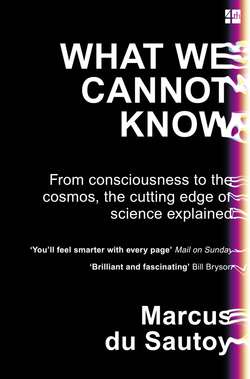Читать книгу What We Cannot Know: Explorations at the Edge of Knowledge - Marcus Sautoy du - Страница 34
THE FRACTAL TREE OF LIFE
ОглавлениеBut it’s not only the mathematics of probability that is at work in evolution. The evolutionary tree itself has an interesting quality that is similar to the shapes that appear in chaos theory, a quality known as fractal.
The fractal evolutionary tree.
The evolutionary tree is a picture of the evolution of life on Earth. Making your way through the tree corresponds to a movement through time. Each time the tree branches, this represents the evolution of a new species. If a branch terminates, this means the extinction of that species. The nature of the tree is such that the overall shape seems to be repeated on smaller and smaller scales. This is the characteristic feature of a shape mathematicians call a fractal. If you zoom in on a small part of the tree it looks remarkably like the large-scale structure of the tree. This self-similarity means that it is very difficult to tell at what scale we are looking at the tree. This is the classic characteristic of a fractal.
Fractals are generally the geometric signature of a chaotic system, so it is suggestive of chaotic dynamics at work in evolution: the small changes in the genetic code that can result in huge changes in the outcome of evolution. This model isn’t necessarily a challenge to the idea of convergence, as there can still be points in chaotic systems towards which the model tends to evolve. Such points are called attractors. But it certainly questions whether if you reran evolution it would look anything like what we’ve got on Earth today. The evolutionary biologist Stephen Jay Gould has contended that if you were to rerun the tape of life that you would get very different results. This is what you would expect from a chaotic system. Just as with the weather, very small changes in the initial conditions can result in a dramatically different outcome.
Gould also introduced the idea of punctuated equilibria, which captures the fact that species seem to remain stable for long periods and then undergo what appears to be quite rapid evolutionary change. This has also been shown to be a feature of chaotic systems. The implications of chaos at work in evolution are that many of the questions of evolutionary biology could well fall under the umbrella of things we cannot know because of their connections to the mathematics of chaos.
For example, will we ever know whether humans were destined to evolve from the current model of evolution? An analysis of DNA in different animals has given us exceptional insights into the way animals have evolved in the past. The fossil record, although incomplete in places, has also given us a way to know our origins. But given the time scales involved in evolution it is impossible to experiment and rerun the tape of life evolving on Earth and see if something different could have happened. As soon as we find life on other planets (if we do), this will give us new sample sets to analyse. But until then all is not lost. Just as the MET office doesn’t have to run real weather to make predictions, computer models can illustrate different possible outcomes of the mechanism of evolution, speeding up time. But the model will only be as good as the hypotheses we have made on the model. If we’ve got the model wrong, it won’t tell us what is really happening in nature.
It’s such computer models that are at the heart of trying to answer the question Poincaré first tackled when he discovered chaos: will there even be a stable Earth orbiting the Sun for evolution to continue playing its game of dice? How safe is our planet from the vagaries of chaos? Is our solar system stable and periodic, or do I have to worry about a grasshopper disrupting our orbit around the Sun?
